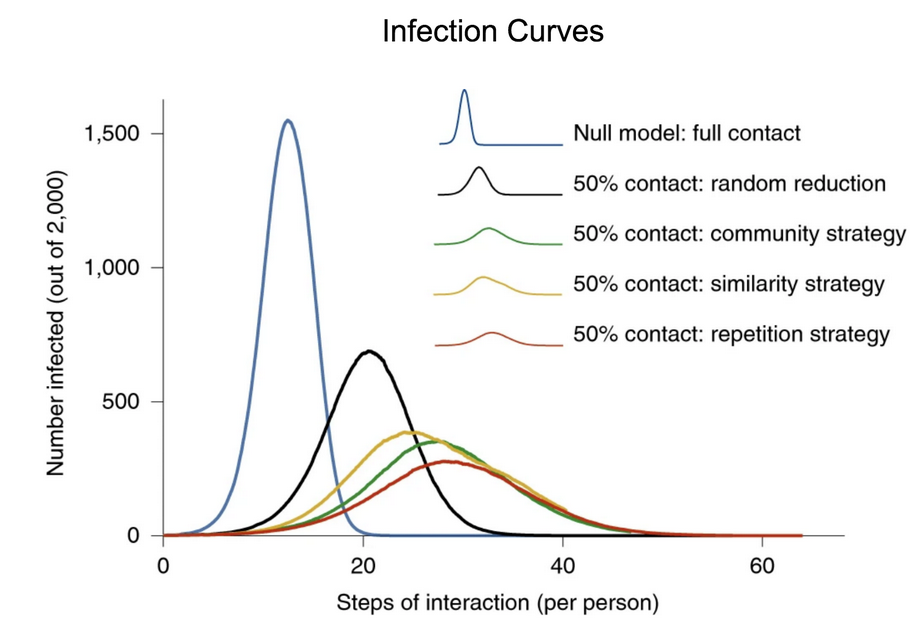
Many aspects of life require that humans are in physical contact with other humans. We can think of people as nodes in a network and contact between them as defining the edges of the network. Unsurprisingly, this contact network plays a key role in virus transmission. This suggests that we can use insights from network science to design policies which allow us to open up more safely.
During lockdown, we have changed the contact network dramatically, cutting most of our contacts through extreme physical distancing. This made it more difficult for the virus to spread, substantially reducing the number of infections and deaths that would have happened otherwise.
As society opens up again, we need to avoid going back to the pre-lockdown contact network which made it so easy for the virus to spread. But we also cannot stay in perpetual extreme physical distancing, as this disrupts many aspects of society severely.
Insights from network science can help in striking this balance, contributing to a safer reopening. Take going back to the office as an example. Currently, the policy at, say, the University of Amsterdam is that a fixed amount of employees, who need to sign-up, can go back to the office on any day. Is this the best we can do?
In a recent study published in Nature Human Behaviour, Block et al. (2020) study three strategies that individuals can follow to change the contact network in order to mitigate virus spread: (a) meet only with people who are similar to you (e.g., in terms of age); (b) reduce physical contact with people who are not connected to your usual contacts (that is, stay within your community); and (c) restrict interactions to a select number of individuals with which you then can interact repeatedly. The Figure below, slightly modified from Block et al. (2020), shows the original network on the left; the networks on the right illustrate schematically the increasing effect these three strategies have.

The authors find that all the strategies flatten the infection curve substantially compared to no intervention and compared to removing edges at random, as shown in the Figure below. Strategy (c) leads to the strongest reduction in peak infections – roughly half as many as the intervention that deletes edges at random.

While the Block et al. (2020) study is not about offices per se, it seems to suggest changes in policy that are relevant for safely opening up offices. Specifically, instead of allowing a fixed number of employees into the office at any given day, we should also fix the composition of the group of employees. For example, say that on a Monday only Hans, Hubert, and Hermione are allowed to go into the office, while on a Friday only Jennifer, Jackie, and Jonas are. The policy thus prevents Hans, Hubert, and Hermione from meeting with Jennifer, Jackie, or Jonas in the office, implementing Strategy (c).
While repeated interaction seems to most strongly curb virus transmission in the setting studied by Block et al. (2020), in the long run, repeatedly interacting with the same colleagues might become boring. One can thus also add (or substitute) in elements from Strategy (a) by composing the groups in a way that increases their similarity – ideally not in terms of something silly like their first names. Instead, one could for example match employees on age by preventing young and old employees from going to the office on the same day. Features such as whether the employees are friends and would meet anyway or place of residence can also be considered. Going beyond individual features such as age, it also seems advisable to restrict interactions between different teams or departments.
All in all, how to safely open up offices is a difficult problem which includes not only epidemiological but also social considerations. Therefore, I do not want to make any strong recommendations here, but instead merely wish to draw attention to (areas of) research that can, and probably should, inform policy making.
I have taken the office as an example, but nothing in the Block et al. (2020) paper specifically relates to offices. This points to the broad applicability of this and other work showing how simple changes in individual behaviour can curb virus spread and help us reopen more safely.
